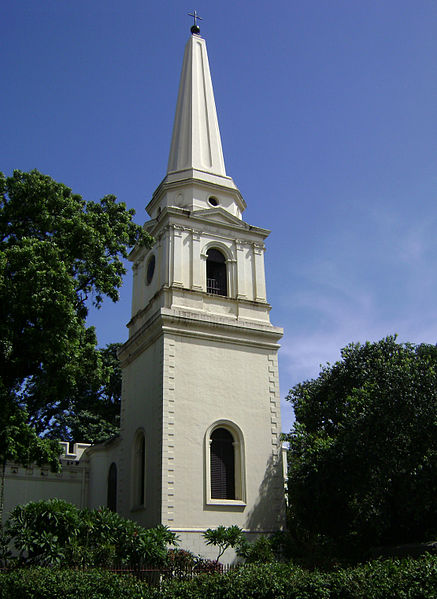Before Madras became Chennai in 1996, Madrasapattinam had to become Madras. How did this historic city begin?
The story of Madras began in 1644 with Fort St. George. The British East India Company had been around since the 1600s and was aggressively expanding its business in the East Indies which included present day Eastern India and South East Asia.
Securing land for ports at strategic points along the Indies was crucial for all European colonists. And most ports needed the protection of a fort. Why? Well, the colonists, all five of them including the English, the French, the Dutch, the Portuguese and the Danes were not always nice to each other. They often tried to steal stuff from each other. Sometimes it was for competitive advantage and at other times just because.
The Europeans in India were also quite outnumbered compared to the native population. Anything could trigger violence from the local population, the king they had signed a treaty with or neighbouring kingdoms who decided to invade. Forts were the only way to ensure that the business part of things carried on as usual and a surprise attack didn’t destroy the entire trading outpost overnight.
So, in 1639, the British signed a treaty securing a 3-mile strip of uninhabited land around the villages of Madrasapattinam and Chennapattinam from the Nayak or local ruler of the region, to set up their factory. The port would be a hub for trade with the entire East Indies and ships from here could directly carry spices and other exotics to England. Once the land had been secured, construction of the Fort started in full swing. It cost around £3000 and the fort was officially inaugurated on St. George’s Day on 23rd April 1644. That’s how the fort got its name. Fort St. George was the first fortified settlement for the British in India.
Soon the port inside the fort, developed into a busy trading hub. Portuguese and Dutch merchants started moving into the fort to take advantage of the trade opportunities and protection it offered. The Fort became a mini Europe. The terms of the treaty ensured that Europeans were not allowed to own property outside the Fort area. So, the citadel inside the Fort became White Town.

As time went on, Indian merchants from surrounding regions moved in, to occupy land around the fort, eventually outnumbering the Europeans inside it. This, was the beginning of Black Town. But despite living separate lives, it wasn’t all smooth sailing and there were riots and skirmishes in between. The French also mounted a few attacks and even possessed the Fort for a short time. But the British prevailed and the Fort survived and grew to become the centre of the Madras Presidency in 1684.
Madras became a popular term to refer to both White Town and Black Town which surrounded Fort St. George. Slowly but surely, this land and its surroundings which were previously uninhabited turned into a city. The rest as they say is history.
The Fort has seen many historic events and housed equally historic people. In 1680, the first Anglican Church in the East, St. Mary’s Church was built inside Fort St. George. The President of the British East India Company and slave trader Elihu Yale was married here in the same year. The famous Yale College in the US is named after him. Robert Clive who is known to have laid the foundation of British rule in India was also married in this Church in 1753.
Today, the Europeans have all left Fort St. George. It now houses the Tamil Nadu Legislative Assembly. And Madras as you know, is Chennai.
To discover more about this historic city, join us on one of our trails in Chennai.
Archives
- January 2022
- December 2021
- November 2021
- August 2021
- March 2021
- February 2021
- January 2021
- December 2020
- November 2020
- October 2020
- September 2020
- August 2020
- April 2020
- March 2020
- February 2020
- January 2020
- November 2019
- October 2019
- September 2019
- August 2019
- July 2019
- June 2019
- August 2017
- February 2017
- January 2017
- October 2013
Featured Posts
- Tales that pots tell: Keeladi excavations AUGUST 18, 2021
- The Last Grand Nawab: Wallajah FEBRUARY 10, 2021
- How Tej Singh became Raja Desingu of Gingee FEBRUARY 5, 2021
- How Shahjahan seized the Mughal throne JANUARY 28, 2021
- Alai Darwaza – Qutub Minar Complex, Delhi NOVEMBER 21, 2020
- Marking History through British buildings NOVEMBER 17, 2020
- The last great queen of Travancore NOVEMBER 7, 2020
- Brahmi and the evolution of scripts OCTOBER 15, 2020
- The Cambodian King of Kanchipuram OCTOBER 14, 2020
- James Prinsep – the man who read the writing on the wall OCTOBER 10, 2020
- Mariamman – the Village Goddess who travelled SEPTEMBER 30, 2020
- Misnamed Monuments of Mamallapuram SEPTEMBER 28, 2020








